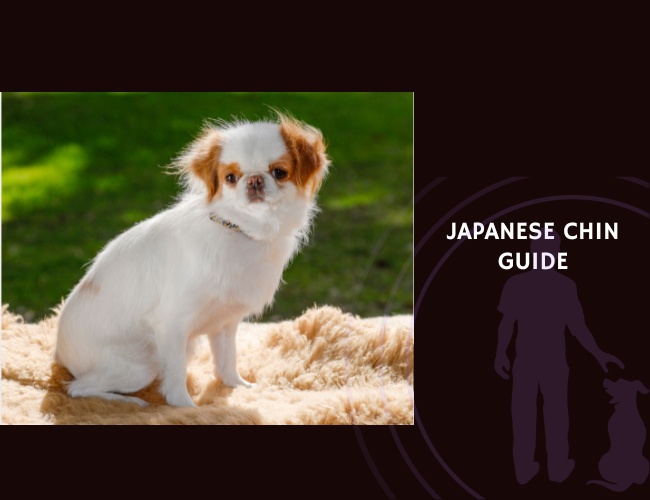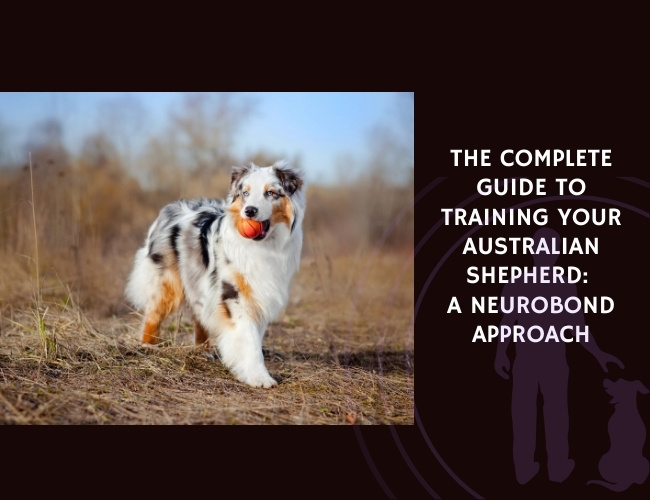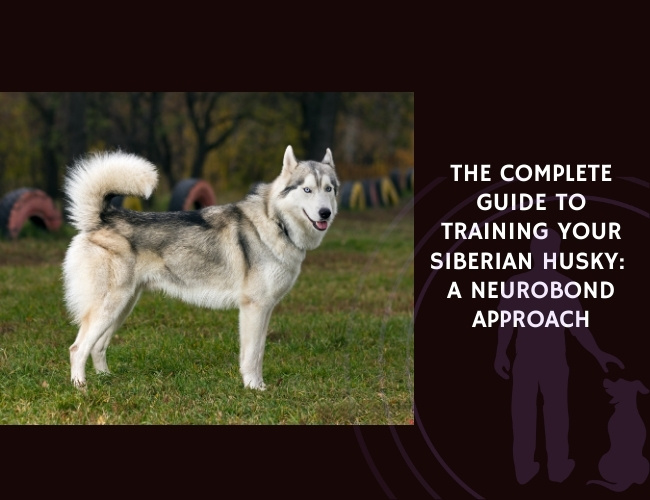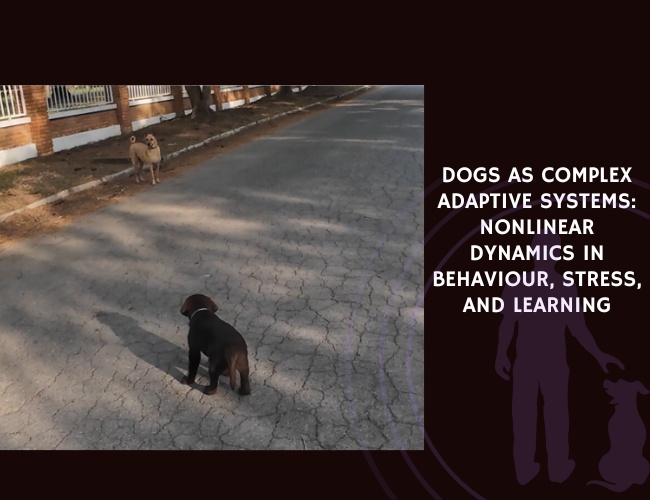Introduction
Step into the world of the Japanese Chin, and you’ll discover a breed that embodies centuries of refinement, grace, and companionship. These distinctive little dogs, with their wide-set eyes and silky coats, have captured hearts from ancient Japanese palaces to modern living rooms across the globe. Did you know that despite their name, these elegant companions likely originated in China before becoming beloved symbols of Japanese nobility?
The Japanese Chin, often described as more feline than canine in their behaviors, represents a unique blend of independence and devotion that sets them apart in the toy breed world. Their aristocratic bearing and charming personality create an irresistible combination that has made them treasured companions for over a thousand years. Let us guide you through understanding these remarkable dogs, from their distinctive cat-like behaviors to their specific care needs, helping you determine if this ancient breed might be your perfect modern companion.
Character & Behavior
Understanding Your Chin’s Unique Personality
The Japanese Chin possesses a character that defies typical dog stereotypes, and you might notice your furry friend displaying behaviors more commonly associated with cats. This breed’s independent nature combines beautifully with their deep affection for their chosen humans, creating a personality that’s both self-assured and loving. Their behavior patterns reflect centuries of selective breeding for companionship in royal courts, where they developed their distinctive blend of dignity and playfulness.
The Cat-Like Nature Your Japanese Chin will likely surprise you with their feline tendencies. They’re known for their meticulous grooming habits, often using their paws to clean their faces in a washing motion that mirrors cat behavior. You’ll find them perching on high surfaces – the back of sofas, window sills, or even attempting to climb to the highest point in a room. This behavior stems from their ancestral role as palace dogs, where they would observe court proceedings from elevated positions.
Social Intelligence & Sensitivity Japanese Chins possess remarkable emotional intelligence, often seeming to read their owner’s moods with uncanny accuracy. They’re sensitive souls who thrive on routine and can become stressed by sudden changes in their environment. This sensitivity means they form incredibly deep bonds with their families, but it also requires you to be mindful of their emotional needs. Your Chin will likely shadow you from room to room, not out of neediness, but from a desire to be part of your daily activities.
Playfulness & Entertainment Value Despite their regal bearing, Japanese Chins have a delightful sense of humor. They’re natural entertainers who seem to enjoy making their humans laugh. You might notice your Chin performing what enthusiasts call the “Chin spin” – a joyful spinning dance they do when excited. This playful nature emerges most strongly in familiar environments where they feel secure and loved. 🐾
Vocalization & Communication
Understanding How Your Japanese Chin ‘Talks’
Japanese Chins are not typically excessive barkers, but they have a rich vocabulary of sounds and body language that they use to communicate with their families. Understanding these communication methods will deepen your bond and help you respond appropriately to your Chin’s needs.
The Chin’s Sound Repertoire Unlike many toy breeds, Japanese Chins are relatively quiet dogs. When they do vocalize, you’ll hear a range of sounds beyond typical barking:
- Soft whimpers or sighs when content
- A distinctive “singing” or yodeling when excited
- Alert barks that are higher-pitched but not shrill
- Gentle grumbles during play or when settling down
Their barking patterns tend to be purposeful rather than reactive. You’ll find your Chin alerts you to visitors or unusual sounds, but they rarely engage in nuisance barking. This makes them excellent apartment dogs, as their communication style respects both their family’s peace and that of neighbors.
Body Language Mastery Your Japanese Chin’s body language speaks volumes. Their expressive eyes, often described as having an almost human quality, convey a wide range of emotions:
- Wide, bright eyes indicate happiness and engagement
- Half-closed eyes show contentment and trust
- Averted gaze might signal stress or submission
The Chin’s distinctive tail carriage also tells a story. A high, gently curved tail indicates confidence and happiness, while a lowered tail might suggest uncertainty. Their ears, too, are wonderfully expressive – perked forward shows interest, while flattened ears might indicate anxiety or submission.
The Silent Communicator Perhaps most endearing is the Japanese Chin’s ability to communicate without sound. They’re masters of the meaningful look, often sitting quietly and gazing at their owners to convey their desires. This silent communication style reflects their heritage as palace dogs, where discretion and subtlety were valued traits. 🧡
Training & Education
Nurturing Your Chin’s Intelligent Mind
Training a Japanese Chin requires understanding their unique blend of intelligence and independence. These dogs are certainly capable of learning, but their cat-like nature means they often choose when to comply with commands. Success in training comes from working with, rather than against, their natural tendencies.
The Foundation: Positive Reinforcement Japanese Chins respond beautifully to positive reinforcement techniques. Their sensitive nature means harsh corrections or loud voices will likely cause them to shut down or become anxious. Instead, focus on:
- Short, engaging training sessions (5-10 minutes maximum)
- High-value treats that capture their interest
- Enthusiastic but calm praise
- Consistency in commands and expectations
Remember, your Chin’s intelligence means they’ll quickly figure out patterns. If you always give treats for a behavior, they might decide to only perform when food is visible. Mix up your rewards with play, affection, and verbal praise to maintain their interest.
Socialization: Building Confidence Early and ongoing socialization is crucial for Japanese Chins. Their naturally reserved nature with strangers can develop into shyness or anxiety without proper exposure. Between 3-14 weeks is the critical socialization window, but learning continues throughout their lives. Focus on:
- Gentle introductions to new people, allowing your Chin to approach at their own pace
- Positive experiences with other well-mannered dogs
- Exposure to various environments, sounds, and surfaces
- Calm, confident handling during new experiences
House Training Considerations House training a Japanese Chin can present unique challenges due to their small size and sometimes stubborn nature. Their small bladders mean more frequent potty breaks are necessary. Success strategies include:
- Establishing a consistent routine from day one
- Using positive reinforcement immediately upon successful elimination
- Considering indoor potty options for apartment living
- Being patient – some Chins take longer to fully housetrain than larger breeds
Mental Stimulation Needs Your Japanese Chin’s intelligence requires regular mental exercise. Boredom can lead to destructive behaviors or excessive attention-seeking. Engage their minds with:
- Puzzle toys designed for small breeds
- Hide-and-seek games with treats or toys
- Teaching fun tricks that showcase their natural grace
- Rotating toys to maintain novelty
Training your Japanese Chin is less about creating an obedient robot and more about developing a cooperative partnership. When you respect their intelligence and work with their natural inclinations, you’ll find they’re eager and capable learners who enjoy showing off their skills. 🐾
Performance & Activities
Engaging Your Chin’s Natural Abilities
While Japanese Chins weren’t bred for specific working tasks like herding or hunting, they excel in activities that showcase their grace, intelligence, and companionship skills. Understanding suitable activities helps maintain their physical health and mental well-being.
Exercise Requirements: Quality Over Quantity Your Japanese Chin’s exercise needs are moderate, reflecting their role as companion dogs. They require:
- Two short walks daily (15-20 minutes each)
- Indoor play sessions during extreme weather
- Gentle games that don’t stress their delicate structure
- Mental stimulation through training and puzzles
These dogs are surprisingly agile and enjoy activities that let them show off their nimble movements. However, their flat faces (brachycephalic structure) mean you must monitor them carefully during exercise, especially in hot weather. Signs of overexertion include excessive panting, reluctance to continue, or breathing difficulties.
Suitable Canine Sports Despite their small size, Japanese Chins can participate in several dog sports:
- Rally Obedience: Their intelligence and desire to please make them natural candidates
- Tricks and Freestyle: Their graceful movements and entertainment value shine here
- Therapy Work: Their calm, sensitive nature suits them perfectly for comforting others
- Conformation Shows: Many Chins excel in the show ring, displaying their breed’s elegance
Avoid high-impact activities like agility with tall jumps, as their delicate structure and luxating patella tendencies make injury risks too high.
Indoor Enrichment Activities Japanese Chins thrive with indoor activities that engage their minds and satisfy their playful nature:
- Teaching them to “dance” or spin on command
- Hide-and-seek games with favorite toys
- Gentle tug-of-war with soft toys
- Creating obstacle courses with household items
Social Activities Your Chin’s social nature means they often enjoy activities involving other people or pets:
- Supervised playdates with gentle, similarly-sized dogs
- Visiting pet-friendly cafes or stores
- Participating in breed meetups
- Accompanying you on errands when weather permits
Remember, the goal isn’t to tire out your Chin but to provide enriching experiences that satisfy their physical and mental needs while respecting their limitations. 🧡

Nutritional Recommendations
Feeding Your Japanese Chin for Optimal Health
Proper nutrition forms the foundation of your Japanese Chin’s health and longevity. Their small size, unique facial structure, and specific health predispositions require careful attention to their dietary needs. Understanding these requirements helps you make informed decisions about your Chin’s nutrition throughout their life stages.
Caloric Needs and Portion Control Japanese Chins typically weigh between 7-11 pounds, placing them firmly in the toy breed category. Their caloric needs are modest but must be carefully balanced:
- Adult Chins need approximately 20-30 calories per pound of body weight daily
- Puppies require 50-60 calories per pound for proper growth
- Senior dogs may need 20% fewer calories to prevent obesity
- Active or breeding dogs might need slight increases
Due to their small stomachs, dividing daily food into 2-3 small meals prevents hypoglycemia and aids digestion. You might notice your Chin is a grazer, preferring to eat small amounts throughout the day rather than consuming large meals.
Choosing the Right Food Select high-quality food specifically formulated for small breeds. Key considerations include:
- Kibble Size: Small, easy-to-chew pieces suited to their tiny mouths
- Protein Content: 25-30% high-quality animal protein
- Fat Content: 15-20% for energy and coat health
- Limited Fillers: Avoid foods with excessive corn, wheat, or by-products
Your Chin’s flat face can make eating challenging. Consider:
- Shallow, wide bowls to accommodate their facial structure
- Slightly moistened kibble if they struggle with dry food
- Elevated feeders to reduce neck strain
- Non-slip bowl bases to prevent sliding during meals
Special Dietary Considerations Japanese Chins can be prone to food sensitivities. Watch for signs like:
- Excessive scratching or licking
- Recurring ear infections
- Digestive upset or irregular stools
- Tear staining (though some is normal in the breed)
If sensitivities develop, work with your veterinarian to identify triggers through elimination diets. Common allergens include chicken, beef, dairy, and certain grains.
Treats and Supplements Treats should comprise no more than 10% of daily caloric intake. Choose:
- Small, soft treats appropriate for toy breeds
- Single-ingredient options for training
- Dental chews designed for small mouths
- Fresh vegetables like carrots or green beans as low-calorie options
Beneficial supplements might include:
- Omega-3 fatty acids for coat and skin health
- Glucosamine for joint support (especially important given their luxating patella risks)
- Probiotics for digestive health
- Tear stain supplements if excessive staining occurs
Hydration Needs Fresh water availability is crucial. Japanese Chins can be particular about their water:
- Change water at least twice daily
- Consider filtered water if they’re reluctant to drink
- Use ceramic or stainless steel bowls (plastic can cause chin acne)
- Monitor intake during hot weather due to their brachycephalic nature
Proper nutrition isn’t just about what you feed but how you feed. Creating positive mealtime experiences and monitoring your Chin’s individual needs ensures they maintain optimal health throughout their lives. 🐾
Health Concerns
Understanding and Managing Breed-Specific Health Issues
Japanese Chins are generally healthy dogs with lifespans of 10-14 years, but like all purebred dogs, they’re predisposed to certain health conditions. Understanding these potential issues helps you provide preventive care and recognize problems early, ensuring your Chin enjoys the best quality of life possible.
Luxating Patella (Kneecap Dislocation) This condition, where the kneecap slips out of position, is perhaps the most common orthopedic issue in Japanese Chins. The condition has genetic components but can be influenced by environmental factors:
Signs to watch for:
- Sudden lifting of a hind leg while walking
- Skipping or hopping gait
- Reluctance to jump or climb stairs
- Intermittent lameness
Management strategies include:
- Maintaining ideal body weight to reduce joint stress
- Providing glucosamine supplements for joint health
- Using ramps instead of stairs when possible
- Regular, gentle exercise to maintain muscle tone
- Surgical intervention in severe cases (grades 3-4)
Brachycephalic Airway Syndrome The Japanese Chin’s flat face, while endearing, can lead to breathing difficulties. This isn’t usually as severe as in some other flat-faced breeds, but awareness is crucial:
Watch for:
- Noisy breathing, especially during exercise
- Excessive panting in mild temperatures
- Blue-tinged gums during activity
- Snoring or sleep disturbances
Preventive measures:
- Avoid exercise during hot, humid weather
- Use harnesses instead of collars to reduce tracheal pressure
- Maintain optimal weight to ease breathing
- Keep your home cool and well-ventilated
- Consider surgery for severe cases affecting quality of life
Eye Conditions Those beautiful, expressive eyes can be prone to several conditions:
Progressive Retinal Atrophy (PRA): A genetic condition causing gradual vision loss
- Early signs include night blindness
- No treatment available, but dogs adapt well
- Genetic testing available for breeding dogs
Cataracts: Clouding of the lens, often age-related
- May require surgical removal if vision is significantly impaired
- Regular eye exams catch problems early
Corneal Scratches: Their prominent eyes are vulnerable to injury
- Keep face hair trimmed
- Avoid rough play with larger dogs
- Check eyes daily for redness or discharge
Heart Murmurs and Mitral Valve Disease Many Japanese Chins develop heart murmurs as they age, often related to mitral valve disease:
- Regular veterinary auscultation detects early changes
- Echocardiograms provide detailed assessment
- Medications can slow progression and improve quality of life
- Low-sodium diets may be recommended
Dental Disease Small mouths with crowded teeth create perfect conditions for dental problems:
- Daily brushing is ideal (start young for best acceptance)
- Dental chews and water additives provide additional protection
- Professional cleanings under anesthesia as recommended
- Monitor for bad breath, reluctance to eat, or pawing at mouth
GM2 Gangliosidosis (Rare but Serious) This genetic storage disease is rare but devastating:
- Genetic testing available and recommended for breeding dogs
- Causes progressive neurological decline
- No treatment available
- Responsible breeders test to eliminate from breeding lines
Preventive Health Care Schedule Maintaining your Chin’s health requires regular veterinary care:
- Annual wellness exams (bi-annual for seniors over 7)
- Core vaccinations per veterinary guidelines
- Monthly heartworm and flea/tick prevention
- Annual blood work to catch issues early
- Dental examinations and cleanings as needed
Being proactive about your Japanese Chin’s health, recognizing breed-specific vulnerabilities, and maintaining strong communication with your veterinarian ensures these delightful companions enjoy long, comfortable lives by your side. 🧡
Graceful. Witty. Watchful.
Elegance meets mischief in miniature.
The Japanese Chin carries centuries of nobility in a compact frame, yet delights in surprising you with spins, quirks, and feline grace. They’re not merely pets—they’re companions with flair, charm, and a quiet sense of humour.
Stillness speaks volumes.
This breed doesn’t bark to be heard—they observe, intuit, and respond with subtlety. A glance, a sigh, a gently arched tail says more than noise ever could. Living with a Chin means learning a language of presence.

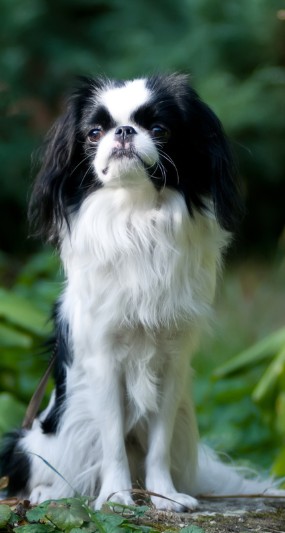
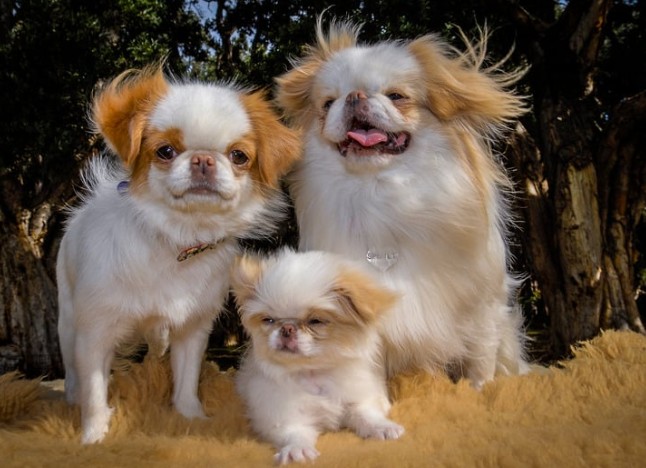
Devotion is dignified, not demanding.
They don’t cling, but they follow. Not for approval, but for connection. Your Chin won’t beg for affection—but they’ll always be near, quietly offering it in the way only an ancient soul knows how.
Lifestyle & Environment
Creating the Perfect Home for Your Japanese Chin
Japanese Chins adapt remarkably well to various living situations, but understanding their preferences and needs helps you create an environment where they truly thrive. These aristocratic little dogs bring their palace heritage into modern homes, requiring certain considerations for their comfort and safety.
Ideal Living Spaces Your Japanese Chin will flourish in almost any loving home, from studio apartments to sprawling estates. What matters most is the quality of the environment rather than its size:
Apartment Living: Japanese Chins are ideal apartment dogs due to their:
- Quiet nature and minimal barking
- Low to moderate exercise needs
- Small size requiring minimal space
- Clean habits and easy housetraining (with patience)
- Calm demeanor that won’t disturb neighbors
Home Safety Considerations: Their small size and curious nature require “Chin-proofing”:
- Secure gaps under furniture where they might get stuck
- Remove or secure toxic plants (they may nibble out of curiosity)
- Install baby gates at stairs until they’re confident navigators
- Keep small objects that could be choking hazards out of reach
- Ensure window screens are secure (they love perching on sills)
Temperature and Climate Needs Japanese Chins are sensitive to temperature extremes due to their brachycephalic features and single coat:
- Provide air conditioning during summer months
- Limit outdoor activities to early morning or evening
- Always provide fresh, cool water
- Never leave them in cars, even briefly
- Consider cooling mats or vests for necessary summer outings
Cold Weather Care:
- While they tolerate cold better than heat, they still need protection
- Provide warm bedding away from drafts
- Consider sweaters for winter walks
- Limit exposure during extreme cold
- Watch for signs of discomfort like shivering or reluctance to walk
Creating Chin-Friendly Spaces Your Japanese Chin’s cat-like nature means they appreciate vertical space and cozy retreats:
- Provide sturdy pet stairs to favorite perching spots
- Create window perches for bird-watching
- Offer multiple soft beds throughout your home
- Designate a quiet retreat area for when they need space
- Consider a small pet tent or covered bed for security
Family Dynamics and Other Pets Japanese Chins generally adapt well to different family structures:
With Children: Best suited to homes with older, gentle children who understand small dog handling:
- Teach children to sit on the floor for interactions
- Supervise all play to prevent accidental injury
- Establish “quiet zones” where your Chin can retreat
- Model gentle handling and respect for the dog’s space
With Other Pets: Their peaceful nature allows for multi-pet households:
- Best with other small, gentle dogs or cats
- Introduce slowly and supervise initial interactions
- May actually befriend cats due to similar temperaments
- Avoid housing with large, boisterous dogs without careful management
Daily Routine Preferences Japanese Chins thrive on routine and predictability:
- Consistent meal times reduce anxiety
- Regular potty breaks prevent accidents
- Scheduled play and cuddle sessions strengthen bonds
- Predictable quiet times for rest
- Maintained sleep schedules (they often adapt to yours)
Travel Considerations These adaptable companions can be excellent travel partners:
- Their small size makes airline cabin travel possible
- They adjust well to new environments when with their people
- Pack familiar bedding and toys for comfort
- Maintain routine as much as possible while traveling
- Research pet-friendly accommodations in advance
Creating the ideal environment for your Japanese Chin means balancing their need for comfort and security with appropriate stimulation and social interaction. When these needs are met, they reward you with unwavering companionship and endless entertainment. 🐾

Senior Care
Cherishing Your Aging Japanese Chin
As your Japanese Chin enters their golden years (typically around age 7-8), their needs begin to shift. Understanding and adapting to these changes ensures your beloved companion remains comfortable and happy throughout their senior years. The same sensitivity and intelligence that defines the breed throughout life becomes even more precious as they age.
Recognizing Age-Related Changes Senior Japanese Chins may show various signs of aging, some subtle and others more apparent:
Physical Changes:
- Graying around the muzzle and eyes (though less noticeable in white Chins)
- Decreased activity levels and longer rest periods
- Stiffness, especially after sleeping
- Weight gain due to slowed metabolism
- Cloudy eyes or vision changes
- Hearing loss (often selective at first!)
- Increased clinginess or desire for comfort
- Confusion or disorientation, especially at night
- Changes in sleep patterns
- Reduced tolerance for disruption in routine
- Possible house-training lapses
Adapting Care for Senior Needs Your senior Chin requires modified care to maintain quality of life:
Veterinary Care Intensifies:
- Bi-annual check-ups become crucial
- Blood work to monitor organ function
- Dental care becomes even more critical
- Regular weight and body condition monitoring
- Early detection and management of age-related diseases
Nutritional Adjustments:
- Senior-formula foods with adjusted protein and calorie levels
- Possible need for softer food if dental issues arise
- Supplements for joint health (glucosamine, chondroitin)
- Increased focus on maintaining ideal weight
- More frequent, smaller meals to aid digestion
Exercise Modifications:
- Shorter, more frequent walks
- Gentle play sessions adapted to energy levels
- Swimming or water therapy for arthritic joints (if tolerated)
- Mental stimulation remains crucial but less physically demanding
- Respect for increased need for rest
Comfort Enhancements Making your home senior-friendly shows love and consideration:
Physical Accommodations:
- Orthopedic beds with easy entry/exit
- Non-slip rugs on smooth floors
- Night lights for dogs experiencing vision loss
- Ramps to replace stairs where possible
- Raised food and water bowls to reduce neck strain
Environmental Considerations:
- Consistent temperature control (seniors feel cold more)
- Quiet spaces away from household chaos
- Easy access to favorite spots
- More frequent potty breaks
- Predictable, calm daily routines
Managing Common Senior Health Issues Several conditions commonly affect aging Japanese Chins:
Cognitive Dysfunction Syndrome (Canine Dementia):
- Maintain mental stimulation through gentle training
- Keep routines extremely consistent
- Consider medications if symptoms impact quality of life
- Provide comfort during confusion episodes
- Create safe spaces to prevent injury during disorientation
Arthritis and Joint Pain:
- Watch for reluctance to jump or climb
- Provide joint supplements as recommended
- Consider pain management medications
- Maintain gentle exercise to preserve mobility
- Massage and physical therapy can help
Heart Disease Progression:
- Monitor breathing rate at rest
- Watch for coughing, especially at night
- Maintain prescribed medications religiously
- Adjust exercise to tolerance levels
- Keep weight optimal to reduce heart strain
Quality of Life Considerations As your Chin ages, regularly assess their quality of life:
- Are they still enjoying favorite activities?
- Is pain well-managed?
- Do they show interest in food and family?
- Are more good days than bad days?
The Japanese Chin’s dignified nature means they may hide discomfort. Your deep knowledge of your individual dog helps you recognize subtle changes that indicate needed interventions.
The Gift of Senior Companionship Senior Japanese Chins offer unique rewards. Their already calm nature becomes even more pronounced, making them perfect companions for quiet activities. They’ve mastered the art of communication with their families and often seem to develop even deeper emotional connections in their twilight years. This phase of life, while requiring more intensive care, often represents the deepest and most meaningful period of the human-Chin bond. 🧡
Conclusion: Is the Japanese Chin Right for You?
After exploring the many facets of Japanese Chin ownership, you’ve discovered a breed that defies simple categorization. These elegant companions, with their cat-like independence and dog-like devotion, offer a unique pet ownership experience that has captivated humans for over a millennium. But the question remains: is this aristocratic little dog the right match for your lifestyle and expectations?
The Ideal Japanese Chin Owner You’ll thrive with a Japanese Chin if you:
- Appreciate a quieter, calmer companion over a high-energy athlete
- Enjoy a dog with personality quirks and cat-like behaviors
- Can provide consistent, gentle training without expecting robot-like obedience
- Have time for regular grooming and health maintenance
- Want a portable companion for various living situations
- Value deep emotional bonds over impressive tricks
- Can respect their need for routine and sensitivity to change
Lifestyle Compatibility Checklist Consider whether your lifestyle aligns with their needs:
- Living Space: Any size works, but climate control is important
- Activity Level: Moderate exercise needs suit less active owners
- Work Schedule: They adapt to your routine but need companionship
- Family Dynamics: Best with adults or older, gentle children
- Other Pets: Generally good with similar-tempered animals
- Travel: Excellent travel companions due to size and adaptability
- Grooming Commitment: Regular brushing and professional grooming needed
The Rewards of Chin Companionship Choosing a Japanese Chin brings unique joys:
- A dignified companion who makes you laugh daily
- Minimal barking and excellent apartment manners
- Deep emotional intelligence and sensitivity to your moods
- Entertaining antics and endearing quirks
- Manageable size with maximum personality
- Rich history and cultural significance
- Long lifespan with proper care
Honest Considerations Be prepared for these challenges:
- Potential for significant health expenses
- Patience needed for house training
- Regular grooming requirements
- Sensitivity to extreme temperatures
- Not suitable for rough play or very young children
- Can be stubborn about training
- May be reserved with strangers
Making Your Decision If you’re drawn to the Japanese Chin’s unique blend of independence and affection, their regal bearing and playful spirit, you may have found your perfect companion. These dogs don’t suit everyone – they require understanding, patience, and acceptance of their quirks. But for those who appreciate their special qualities, Japanese Chins offer incomparable companionship.
Consider connecting with breed-specific rescue organizations or reputable breeders who health test their dogs. Spend time with adult Chins to truly understand their temperament. Join online communities of Chin owners to learn from their experiences.
The Japanese Chin isn’t just a pet – they’re a lifestyle choice that brings centuries of breeding for companionship into your modern life. If you’re seeking a small dog with a huge personality, a companion who will perch beside you like a feline friend while loving you with canine devotion, the Japanese Chin might just be your perfect match. These remarkable little dogs have graced palaces and humble homes alike, bringing joy, laughter, and unwavering companionship wherever they go. Perhaps it’s time for one to grace your life as well. 🐾🧡

